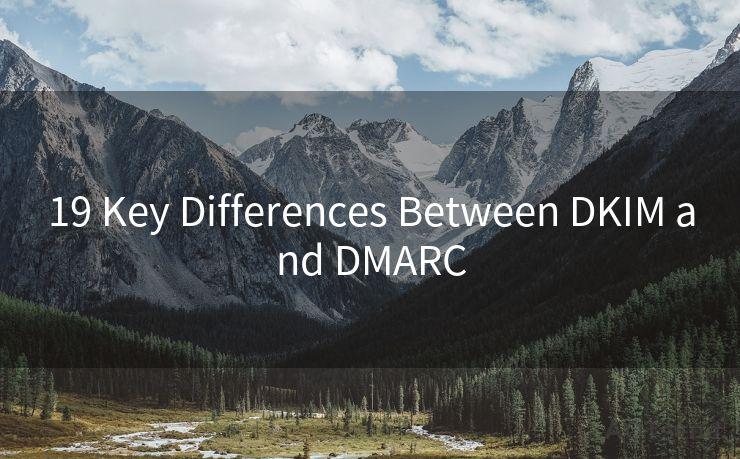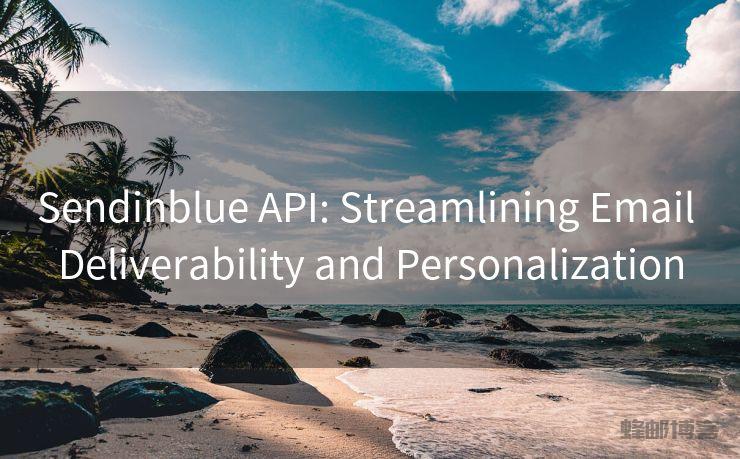19 Key Differences Between DKIM and DMARC




When it comes to email authentication and security, DKIM (DomainKeys Identified Mail) and DMARC (Domain-based Message Authentication, Reporting, and Conformance) are two crucial protocols. While both aim to enhance the security and trustworthiness of emails, they serve different purposes and function in distinct ways. Let's explore the 19 key differences between DKIM and DMARC.
1. Purpose and Functionality
DKIM focuses on validating the authenticity and integrity of an email message by using digital signatures. DMARC, on the other hand, goes beyond just validation; it provides a mechanism for domain owners to specify how unauthenticated emails should be handled.
2. Authentication Method
DKIM uses a pair of public and private keys to sign and verify email messages. DMARC relies on SPF (Sender Policy Framework) and DKIM to authenticate emails and provides additional reporting and policy mechanisms.
3. Email Integrity
DKIM ensures that the email content hasn't been tampered with during transit. DMARC does not directly address email integrity but rather focuses on the authenticity of the sender.
4. Reporting
DMARC offers detailed reporting on email authentication results, helping domain owners monitor and protect their domains from fraudulent activities. DKIM does not provide such reporting functionality.

🔔🔔🔔
【AOTsend Email API】:AOTsend is a Managed Email Service for sending transactional emails. Support Email Types: reminders, authentication, confirmations, notifications, verification codes, invoices, password resets, account activations, billing statements, two-factor authentication (2FA), and one-time passwords (OTP) emails, etc. $0.28 per 1000 Emails. 99% Delivery, 98% Inbox Rate.
You might be interested in:
Why did we start the AOTsend project, Brand Story?
What is a Managed Email API, How it Works?
Best 25+ Email Marketing Platforms (Authority,Keywords&Traffic Comparison)
Best 24+ Email Marketing Service (Price, Pros&Cons Comparison)
Email APIs vs SMTP: How they Works, Any Difference?
5. Policy Control
DMARC allows domain owners to set policies on how to handle unauthenticated emails, such as rejecting or quarantining them. DKIM does not offer such policy controls.
6. Deployment Complexity
DKIM implementation involves generating and managing cryptographic keys, which can be technically challenging. DMARC deployment requires configuring DNS records and setting up reporting mechanisms, which may also involve some complexity.
7. Compatibility
Both DKIM and DMARC are widely supported by major email providers and systems, ensuring compatibility across platforms.
8. Security Enhancement
DKIM and DMARC, when used together, provide a robust layer of security, enhancing the trustworthiness and reliability of emails.
9-19. Technical Differences
- DKIM signs the email header and body, while DMARC focuses on the sender's domain.
- DKIM uses asymmetric cryptography, whereas DMARC relies on DNS-based records.
- DKIM signatures are attached to the email, whereas DMARC policies are published in DNS.
- DKIM can be used independently, but DMARC relies on SPF and DKIM for authentication.
- DKIM verifies the integrity and authenticity of individual emails, while DMARC provides a framework for handling unauthenticated emails.
- DKIM signatures expire after a certain period, but DMARC policies are persistent.
- DKIM requires the receiver to have the public key to verify the signature, while DMARC policies are publicly available.
- DKIM can be used for both inbound and outbound emails, while DMARC is primarily focused on inbound emails.
- DKIM offers end-to-end security, ensuring that the email hasn't been tampered with during transit, whereas DMARC provides visibility and control over email authentication.
In conclusion, DKIM and DMARC serve distinct purposes in enhancing email security. DKIM ensures the authenticity and integrity of emails through digital signatures, while DMARC provides a framework for handling unauthenticated emails and offers detailed reporting. By understanding these key differences, organizations can make informed decisions about implementing these protocols to improve their email security posture.




Scan the QR code to access on your mobile device.
Copyright notice: This article is published by AotSend. Reproduction requires attribution.
Article Link:https://www.mailwot.com/p400.html



